Film Inquiry Recommends: Stylish Gangster Films
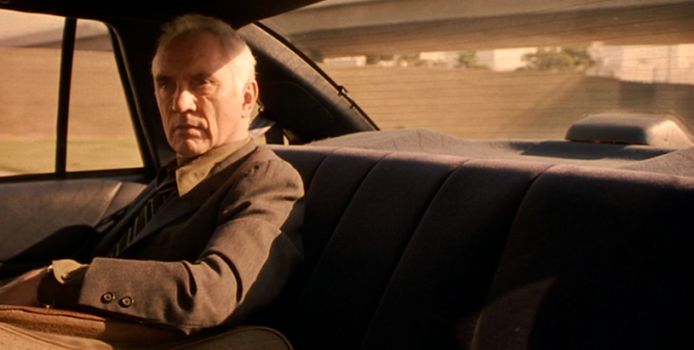
Alex is a 28 year-old West Australian who has a…
Over at our official Facebook page , we are currently posting daily Film Recommendations, with each week being a different theme. The first theme is Stylish Gangster Films, crime films which are elevated by aesthetically appealing visuals and great alternative takes on the usual gangster film tropes.
1. Youth of the Beast (1963, Seijun Suzuki)

Youth of the Beast is one of Seijun Suzuki’s most underrated works, as Suzuki is usually associated with his other crime works with Joe Shishido such as Branded to Kill and Tokyo Drifter. The plot is something you’ve seen before, the Yojimbo/Fistful of Dollars plot, an outsider (Shishido) pits two yakuza clans together in an attempt to rid both of them. Whilst the plot is quite simplistic (it’s pretty easy to follow, compared to Suzuki’s other films), the visuals are stunning.
The use of bold colours and vivid backgrounds give quite a theatrical and exaggerated feel to the film, elevating the material to a level which is quite fascinating to watch. Beast also features some creative gunplay and confrontational scenes, with one famous scene from the film being where Shishido is threatened by shotgun by one of the yakuza leaders, whilst an entirely different film is projected in the background and club beats burst through an open door. It’s a film bursting with energy and severly underseen by contemporary audiences.
2. Point Blank (1967, John Boorman)
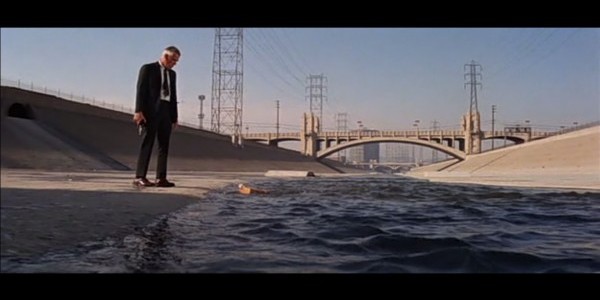
Adapted from the Richard Stark novel Payback, Point Blank is one of the many adaptations of the book (the most famous one being the 1999 Mel Gibson film Payback, which was a much more literal translation of the novel). Point Blank cemented Lee Marvin’s tough-guy persona (this and Dirty Dozen, as they were both released in 1967) which he would continue for the rest of his career. Lee Marvin is great in this film as Walker, a man who, after a successful robbery of a mafia dropsite, is betrayed by his crime partner and wife and left for dead on Alcatraz island (an element added by Boorman, which is one of the great locations utilised in the film), returns home and decides to go after the ones that betrayed him and get his money back.
The film employs a dream-like atmosphere, supported by it’s intricate editing, where several scenes from the film are repeated throughout, logic gaps and several plot contradictions appearing as the film goes on, which all add to the film’s dream logic which asks the audience how they are to interpret the events on-screen, adding a layer of intelligence the later remakes surely lacked. The film is a masterclass in the use of colour and importance of production design, with each character in the film is assigned a different colour, which helps the audience identify the multiple layers in the mafia. As Walker gets closer to his money, the colours get warmer. Boorman is usually seen today as a hack director, due to films like Zardoz and Excalibur, but this film is extremely well made and must be seen by anyone interested in the use of color in movies or just crime films in general.
3. Blast of Silence (1961, Allen Baron)
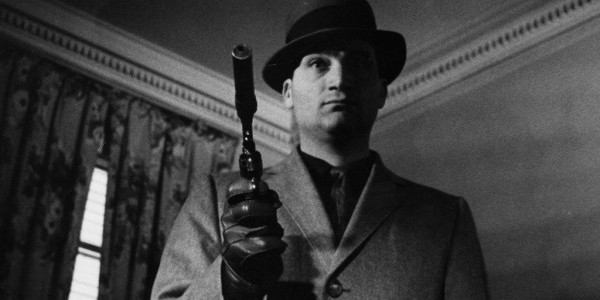
Much like Charles Laughton with Night of the Hunter and L.Q. Jones with A Boy and His Dog, Blast of Silence is the only film Allen Baron ever directed and that is such a tragedy. Thank god for Criterion Films for resurrecting this small indie film from the 1960’s and allowing modern audiences to witness this great crime film. Blast of Silence is about Frank Bono (played by Baron) a lonely hitman who is going through the motions, is assigned a simple hit job back in his old Home Town during Christmas Eve, here he bumps into some old school friends, which starts to trigger some old feelings within Frank which start to affect his working life. The plot of the film might sound like the great John Cusack film Grosse Pointe Blank, but this film is much darker, but still has a wry smile which helps the film from becoming too grim.
The most unique aspect of the film is that it employs a continuos 2nd person narration, which is performed by Lionel Standers, which adds a gruff noir presence to the film and also highlights the cynical and pending thoughts of Frank, as we see his attitude slowly shift throughout the film. The black and white cinematography of the film is exceptional, with many frames being something you could hang on a wall. The film did okay at the box office when it was released, but not enough to give Baron future work in Hollywood, which is a damn shame. Baron went on to direct a lot of television throughout the 60’s to the late 80’s. Blast of Silence is an example of great indie film-making, a low-key film which was swept away from bigger blockbusters at the time but finally finding it’s deserved audience today.
4. Le Cercle Rouge (1970, Jean-Pierre Melville)
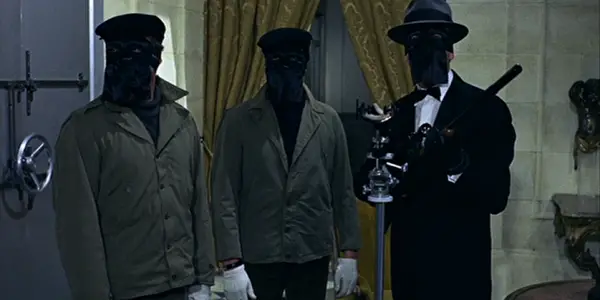
Jean-Pierre Melville is one of the pioneer’s of ‘cool’ cinema. Between this film and Le Samourai, Melville made the gangster genre cool again. He achieved this by injecting his films with a cold atmosphere, smooth/disciplined characters and vivid color palettes, which made the films quite aesthetically pleasing. This made the audience view these characters as quite hip and not the usual stereotypical dishevelled gangsters usually seen in 1950’s-60’s American crime films. The influence of Le Cercle Rouge can be seen throughout crime films that came afterwards, the most recent example being last year’s John Wick (which even featured a nightclub called The Red Circle, an english translation of the title). The film is about 3 different criminals from various paths meet and decide to perform a risky jewellery store heist.
The film shares some similarities with Jules Dassins’ Rififi, such as the calm/collected characters and their silent heist scenes, with Le Cercle Rouge featuring a 25 minute long heist scene completely in silence, which encapsulates it’s audience by drawing them into it and by already establishing the tension by highlighting the riskiness of the operation, has us completely consumed by the penultimate scene. Much like the other films featured this week, the stylish cinematography employed in this film, such as the use of cool (in the literal sense) colours and the controlled style that Melville uses gives the film a very professional and composed feel, lacking cheap plot elements or uncharacteristic components appearing throughout it’s long 140 minute running time. This film is essential Jean-Pierre Melville (other recommended titles being Le Samourai, Le Doulos and Bob the Gambler) and also essential for anyone wanting to understand one of the originators of cool, post modern cinema which evolved into the diverse pop-culture orientated cinema seen today from directors like Quentin Tarantino and Wes Anderson.
5. The Limey (1999, Steven Soderbergh)
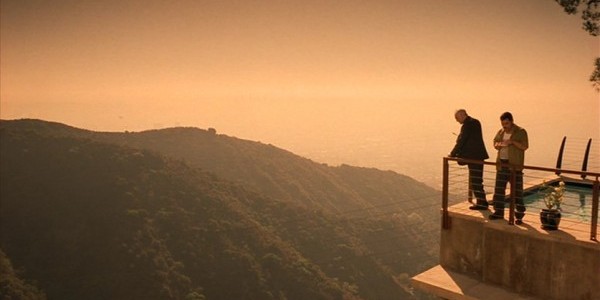
The Limey, Steven Soderbergh’s tribute to John Boorman’s Point Blank, is an eclectic gangster film which is more focused on the psychology of the main character than on the gangsters and gunplay aspect of the story. The plot of the film involved Wilson (Terrence Stamp) who after learning his daughter has been killed by the drug dealer Terry Valentine (Peter Fonda), decides to track down Terry and make him pay for what he did. The influences of Point Blank can be seen in it’s editing style, which features repetitive and non-linear structuring of the film, which highlights the erratic mindset of the main character, as he tries to add some architecture to the world that has just crumbled around him after hearing the news about his daughter.
To today’s audiences, the film is usually criticised for it’s couple of scenes of overacting by Terrence Stamp, where he is seen screaming at the various clusters of criminals he comes across. Whilst they can be funny to watch without context, the raw emotion that Stamp is using is quite effective when watching the film as a whole and it’s showing his slight instability as he unleashes his frustrations at these lower criminals. The film’s stylish approach, it’s use of long shots and naturalistic lighting, establishes a sense of realism which clashes with the film’s dream-like atmosphere achieved through the editing, giving the audience a substantial world and characters to attach themselves too, but it’s stylised enough to make it entertaining. It elevates a standard crime/revenge story to that of something which is much more memorable. One of the more underseen picks in Soderbergh’s library, which is understandable as he has quite an diverse library to navigate through.
6. The League of Gentlemen (1960, Basil Dearden)
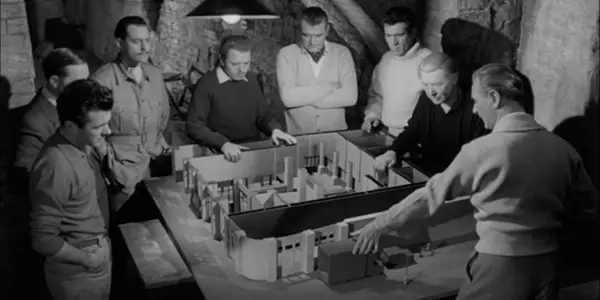
Outside of most French crime cinema (such as Le Cercle Rouge and Rififi), The League of Gentlemen is probably the most elegant and high-class bank heist film you will see, thanks to the male-only upper class British cast and the steady direction employed. League of Gentlemen tells the story of Norman Hyde (Jack Hawkins) an ex-British Army member who organizes a group of British Army rejects (much like Dirty Dozen, each member has their unique reasons for being kicked out) to perform a bank heist, based on one Hyde has read about in a novel.
Whilst the film doesn’t reinvent the heist genre in any way, the approach towards it makes it quite enjoyable and the classy nature of the film makes it a refreshing watch from most contemporary heists films like Ocean’s 11 or Focus. The heist plan is quite straightforward and surprisingly practical, the rapport between the group members is effective and interesting to watch, as the characters clearly respect each other and there is no shoe-horned character conflicts for the sake of heightening the drama. The only downside to the film is that due to being released in 1960, it fell under the Motion Picture Production Code, so the film’s conclusion is quite predictable and the way it goes down is quite poorly written and slightly unsatisfying. If you’re looking for an elegant British heist film featuring a classy cast of characters, FilmInquiry highly recommend you check out this film.
7. The Yakuza (1974, Sydney Pollak)
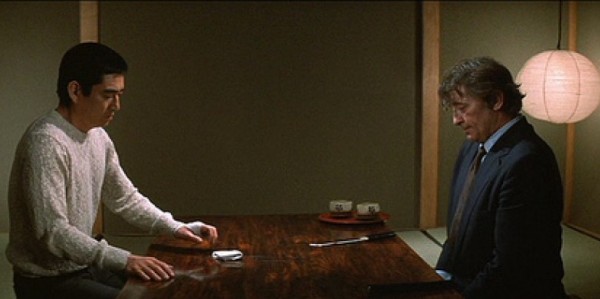
The Friends of Eddie Coyle co-stars Robert Mitchum and Richard Jordan team up for this great east meets west neo-noir gangster film which is a lot deeper and darker than one would assume looking at the poster or reading the log line. Mitchum stars as Harry Kilmer, a retired detective who must go to Japan to solve a kidnapping case, once there, gets tangled in a past relationship with a Japanese woman he had saved during World War 2 and due to local traditions, must deal with her resentful brother who technically owes a favour to Kilmer. The visual stylisation of the film comes through the neon-soaked streets of Tokyo, giving a nice Japanese aesthetic tied with a Western noir plot. The film deals with some deep themes and does them extremely well, tying in an interesting action plot without seeming cheap or overriding the central messages of the film.
The way Japanese culture is portrayed in this film is quite respectful and you can tell Sydney Pollak has reverence for it and wanted to portray it accurately to a mainstream audience, highlighted by the juxtaposition between the morals of Mitchum’s character and Ken Takakura, the central Japanese protagonist. There’s some surprising plot twists in the film, keeping the story fresh without resorting to any cheap or lazy writing to move the plot along, culminating in a great visceral action scene which is exactly what you hope for when seeing the poster (Mitchum with his American shotgun, Takakura using his katana, saving the day). Highly recommended for people who want an action film that contains intelligence, characters you actually care about and a successful mix of American and Japanese styles.
Are there any other stylish gangster films you can recommend?
(top image: The Limey – source: Artisan Entertainment)
Does content like this matter to you?
Become a Member and support film journalism. Unlock access to all of Film Inquiry`s great articles. Join a community of like-minded readers who are passionate about cinema - get access to our private members Network, give back to independent filmmakers, and more.













